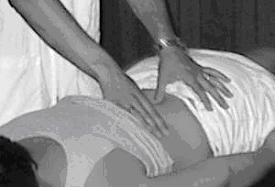Reliability of Spinal Palpation: Accept or Ignore the Evidence?
Reference:Seffinger MA et al Reliability of spinal palpation for diagnosis of back and neck pain: a systematic review of the literature. Spine 2004 Oct 1;29(19):E413-25.
- Haneline MT, Young M. A review of intraexaminer and interexaminer reliability of static spinal palpation: a literature synthesis. J Manipulative Physiol Ther. 2009 Jun;32(5):379-86.
These two excellent review papers assessed the reliability of common spinal palpation tests used to diagnose spinal pain.
Basic Conclusions:
- Pain provocation tests are most reliable (e.g. L4-5 PA pressure produces pain, SI distraction test)
- Soft tissue paraspinal palpatory diagnostic tests are not reliable (e.g. the left longissimus thoracic muscle is tight and has a trigger point)
- Motion palpation and spinal land marking remains inconsistent (e.g. hypermobile C5-6 right rotation)
- Regional range of motion is more reliable than segmental range of motion (e.g. Saying mid thoracic extension hypomobile is better than saying exactly T5-6 extension is hypomobile)
- Intra-examiner reliability is better than inter-examiner reliability. (Who cares? I agree with myself, even though you may not agree with me!)
- Examiners? discipline did not influence reliability (i.e. PTs vs. Chiros vs. Osteopaths)
- Experience level did not influence reliability (i.e. new grads vs. experienced manual therapists?in fact, experience may worsen reliability!
- Training just before the study did not improve reliability (i.e. training vs. no training)
- Using symptomatic subjects did not improve reliability (i.e. asymptomatic vs. real patients)Posted on: March 27, 2010
Categories: Relevant Physical Therapy Articles


